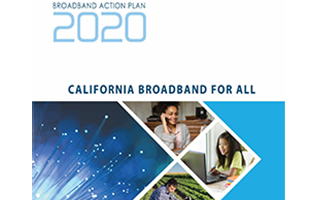This Plan focuses on achieving three long-term goals: All Californians have high-performance broadband available at home, schools, libraries, and businesses; All Californians have access to affordable broadband and the devices necessary to access the internet; and All Californians can access training and support to enable digital inclusion. To achieve these goals the California Broadband Council plans to leverage the state’s full range of tools, including policy, programs, funding, partnerships, and collaborations with federal, local, and tribal governments.
Broadband is essential to modern life. It is an engine of economic possibility, educational opportunity, civic engagement, and access to health care. People and communities that lack broadband and the means to use it are falling behind.
Residents in less populated areas have much less access to broadband services. But lack of broadband is not just a matter of geography or density; income, education, disability status, age, race, and ethnicity all correlate with lower broadband adoption. In other words, the poor, the less-educated, the differently abled, seniors, and people of color also feel the costs of the digital divide.
The COVID-19 pandemic has reinforced our reliance on broadband—and the importance of closing the divide. With school, work, and health care increasingly—or completely—available online as a public health imperative, Californians’ ability to access and use broadband became the difference between being able to fully engage in life, and being cut off.
In light of these challenges, this California State Broadband Action Plan—prepared in response to Governor Gavin Newsom’s executive order —reflects the state’s belief that broadband is essential to economic and workforce development, public safety, education, and an engaged public.
The California Broadband Council developed this “Broadband for All” plan in fall 2020 understanding that digital equity warrants broadband access, adoption, and training.
The Council solicited extensive engagement and input from state and local agencies, state legislative leaders, tribal nations, broadband industry leaders, nonprofits, and members of the public. Besides our own research on national best practices, we reviewed 70 written comments and listened to ideas and concerns raised by many of the 150 organizations and more than 600 attendees that participated in listening sessions, online events, and meetings.

